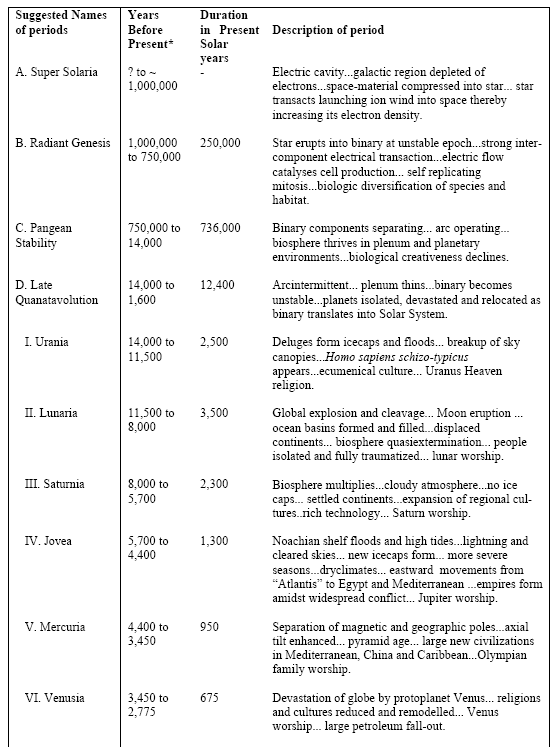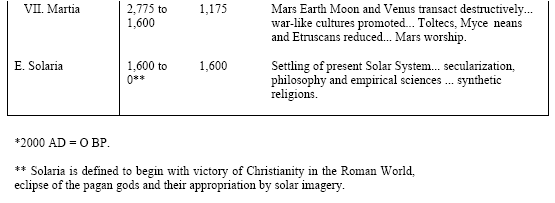
1. An Unconventional Time Scale
AGES OF SOLARIA BINARIA


2. A Conventional Time-Scale such as is found in numerous works.
|
Period & Epoch |
Years before Present (m/ y) |
Duration (m/ y) |
Biosphere Prominences |
|---|---|---|---|
|
Quaternary (Holocene) |
15,000 yrs. |
15,000 yrs. |
see text below* |
|
Quaternary (Pleistocene) |
2 |
2 |
|
|
Tertiary (Pliocene) |
15 |
13 |
|
|
Tertiary (Miocene) |
28 |
13 |
|
|
Tertiary (Eocene) |
37 |
9 |
|
|
Cretaceous |
92 |
55 |
|
|
Jurassic |
119 |
27 |
|
|
Triassic |
142 |
23 |
|
|
Permian |
175 |
33 |
|
|
Carboniferous |
249 |
74 |
|
|
Devonian |
321 |
72 |
|
|
Silurian |
343 |
22 |
|
|
Ordovician |
400 |
57 |
|
|
Cambrian |
492 |
92 |
|
|
Precambrian |
2492 |
2000 |
* In the Q mankind caps the prominent insect, mammal, fish, bird and angiosperm plants, presences, which meet the Cretaceous that, with the J, T, and P down into the Carboniferous. abounds in reptiles (dinosaurs), fish both bony and shark-like, brachiopods and ammonites, with conifers abundant. Then we move into ages rich in amphibians, shark-like fish, insects, tetracorals, and productids.
The Ordovician and Cambrian favour nautiloids, graptolites, trilobites, and lingulella, while the Precambrian reveals bacteria and algae.